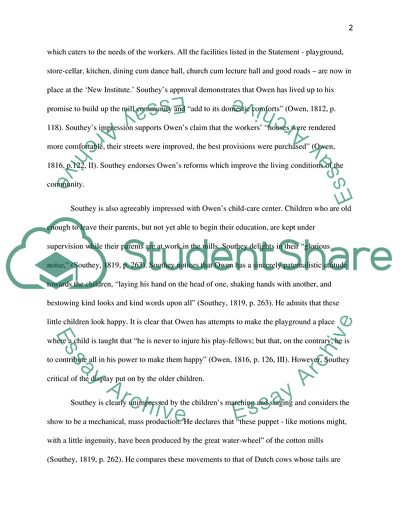Cite this document
(New Lanark: As Seen by Robert Southey and Robert Owen Term Paper, n.d.)
New Lanark: As Seen by Robert Southey and Robert Owen Term Paper. https://studentshare.org/philosophy/1808361-compare-and-contrast-robert-southeys-impression-of-new-lanark-with-owens-account-of-his-reforms-at-new-lanark
New Lanark: As Seen by Robert Southey and Robert Owen Term Paper. https://studentshare.org/philosophy/1808361-compare-and-contrast-robert-southeys-impression-of-new-lanark-with-owens-account-of-his-reforms-at-new-lanark
(New Lanark: As Seen by Robert Southey and Robert Owen Term Paper)
New Lanark: As Seen by Robert Southey and Robert Owen Term Paper. https://studentshare.org/philosophy/1808361-compare-and-contrast-robert-southeys-impression-of-new-lanark-with-owens-account-of-his-reforms-at-new-lanark.
New Lanark: As Seen by Robert Southey and Robert Owen Term Paper. https://studentshare.org/philosophy/1808361-compare-and-contrast-robert-southeys-impression-of-new-lanark-with-owens-account-of-his-reforms-at-new-lanark.
“New Lanark: As Seen by Robert Southey and Robert Owen Term Paper”. https://studentshare.org/philosophy/1808361-compare-and-contrast-robert-southeys-impression-of-new-lanark-with-owens-account-of-his-reforms-at-new-lanark.


